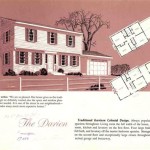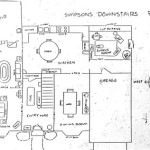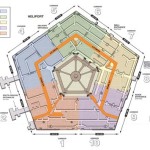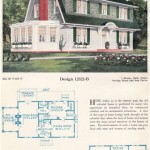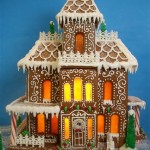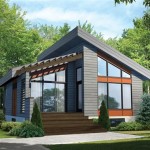```html
How To Make Space Planets
Creating depictions of space planets, whether for artistic endeavors, educational materials, or scientific visualization, involves a blend of scientific understanding and artistic technique. The process requires careful consideration of planetary features, atmospheric composition, surface textures, and lighting effects to generate convincing and visually compelling representations. This article will outline various methods and principles involved in constructing believable planetary visuals, applicable to both digital and traditional mediums.
The foundation of any realistic space planet visualization lies in understanding the geological and atmospheric processes that shape real planets. Factors such as planetary size, mass, distance from its star, and presence of a magnetic field significantly influence its appearance. For example, a large, gaseous planet like Jupiter exhibits swirling cloud patterns and prominent banding due to its rapid rotation and differential atmospheric circulation. Conversely, a rocky planet like Mars displays features indicative of past or present geological activity, such as impact craters, volcanoes, and canyons.
The color palette is another critical element. Planetary colors are determined by their atmospheric composition and surface materials. Earth's blue hue comes from the scattering of sunlight by the atmosphere, while the reddish tint of Mars is due to iron oxide on its surface. Understanding these color relationships is crucial for creating realistic and visually appealing planets. Researching the spectral properties of common planetary materials can provide valuable insights into selecting appropriate colors.
Understanding Planetary Geology and Atmosphere
A successful depiction of a space planet hinges on grasping the fundamental principles of planetary geology and atmospheric science. The geology dictates the surface features—mountains, valleys, craters, volcanoes, and plains—while the atmosphere influences the color, cloud cover, and visibility of the surface. Ignoring these underlying principles will result in an unrealistic and unconvincing image. Thorough research forms the bedrock of any attempt to create a realistic representation of a planet.
Consider the hypothetical creation of a terrestrial planet similar to Earth, but significantly larger. The increased gravity would influence the height of mountains, making them lower and broader than those on Earth. The denser atmosphere could result in increased cloud cover and a less distinct surface view from space. Furthermore, the larger size might prolong volcanic activity, leading to a greater abundance of volcanic features on the surface.
Conversely, a smaller terrestrial planet like Mercury would have a weaker gravitational pull, resulting in less atmospheric retention. Its surface would be heavily cratered due to the lack of atmospheric shielding. Volcanic activity would likely cease relatively early in its history, leaving a largely unchanged surface over billions of years. Understanding these differences is fundamental to creating distinct and believable planetary visuals.
When creating gas giant planets, understanding their atmospheric composition becomes even more crucial. The bands and zones seen on Jupiter are caused by differential rotation and convection currents within the atmosphere, creating alternating bands of rising and falling gases. The Great Red Spot is a massive storm that has been raging for centuries. These features are not random; they are a direct result of the planet's dynamics.
The colors of gas giants are also determined by their atmospheric composition. Ammonia, methane, and other trace gases absorb and reflect different wavelengths of light, leading to the diverse color palettes observed on planets like Jupiter, Saturn, Uranus, and Neptune. Accurate representation of these atmospheric characteristics is paramount for achieving realism.
Techniques for Creating Planetary Textures
Generating realistic surface textures is paramount for visually compelling planets. Several techniques may be employed, depending on the medium being used. In digital art, procedural texturing, photobashing, and the use of heightmaps are common methods. Traditional artists can achieve similar effects through layering, blending, and the manipulation of textures with various tools.
Procedural texturing involves using algorithms to generate complex and varied surface patterns. This technique is particularly useful for creating realistic terrains, cloud formations, and other natural features. Software packages like Blender, Substance Designer, and World Machine offer powerful tools for creating and manipulating procedural textures. The advantage of procedural textures is their scalability and non-repetitive nature. They can be adjusted to fit different planetary sizes and resolutions without loss of detail.
Photobashing involves combining multiple photographs to create a single image. This technique can be used to quickly generate realistic surface textures by incorporating elements from real-world geological formations, such as mountains, deserts, and glaciers. The key to successful photobashing is to select images that are compatible in terms of lighting, perspective, and color, and to seamlessly blend them together.
Heightmaps are grayscale images that represent the elevation of a surface. White areas represent high elevations, while black areas represent low elevations. Heightmaps can be used to create 3D models of terrain, or to generate displacement maps that deform the surface of a 2D image. Heightmaps can be created using a variety of methods, including procedural generation, photogrammetry, and hand-painting.
For traditional artists, techniques such as dry brushing, stippling, and layering can be used to create realistic surface textures. Dry brushing involves using a brush with very little paint to create a subtle, textured effect. Stippling involves creating a pattern of small dots to represent variations in tone and texture. Layering involves applying multiple layers of paint, allowing each layer to dry before applying the next.
No matter the chosen medium, paying close attention to detail and incorporating a variety of textures is essential for creating realistic and visually appealing planetary surfaces. The scale of the textures needs to be appropriate for the size of the planet being depicted. A texture that looks plausible on a small asteroid will likely appear unrealistic on a large gas giant.
Lighting, Shadows, and Atmospheric Effects
Lighting and shadows are crucial for creating a sense of depth and realism in planetary visualizations. The position of the light source determines the direction of shadows, which in turn defines the shape and form of the planet. Accurately calculating the intensity and color of light is also important for creating a believable atmosphere.
The angle of incidence of light affects the brightness and color of the surface. Areas that are directly illuminated by the light source will be brighter and more saturated than areas that are illuminated at a glancing angle. The color of the light can also be affected by the atmosphere. For example, sunlight passing through a dense atmosphere may be scattered, resulting in a warmer, reddish hue.
Atmospheric effects such as haze, fog, and clouds can also significantly impact the appearance of a planet. Haze and fog can reduce the visibility of the surface, creating a sense of depth and distance. Clouds can add complexity and visual interest to the atmosphere, masking parts of the surface at varying densities. The placement and appearance of clouds should be based on understanding of planetary weather patterns.
The presence of a ring system also affects the lighting and shadows on a planet. Rings cast shadows on the planet's surface, creating complex patterns of light and dark. The rings themselves are also illuminated by the sun, creating a bright halo around the planet. Accurately depicting these effects is crucial for creating a realistic and visually compelling ringed planet.
When rendering a planet digitally, global illumination techniques can be used to simulate the complex interplay of light and shadow. Global illumination algorithms calculate the indirect illumination of a scene, taking into account the reflection and refraction of light off of surfaces. This can result in a more realistic and visually appealing image.
Regardless of the specific techniques used, careful attention to lighting, shadows, and atmospheric effects is essential for creating a realistic and visually compelling depiction of a space planet. Understanding how light interacts with different surfaces and atmospheric conditions is key to creating believable visuals.
By comprehensively addressing planetary geology and atmosphere, mastering texturing techniques, and employing accurate lighting principles, anyone can create convincing and visually stunning representations of planets. These elements are crucial in communicating scientific concepts, enhancing artistic endeavors, and inspiring a wider appreciation for the complexities and beauty of the cosmos.
```
How To Make A 3d Solar System Model For Kids Planets School Project Time 4 Tv

How To Make A Space Mobile

How To Make Planets In Blender

How To Make Planets In Photo

How To Make A Diy 3d Solar System Model Mombrite

Make A Model Solar System To Learn About The Planets

Solar System Crafts For Kids

How To Make A Diy 3d Solar System Model Mombrite

Planet Activities And Space Crafts For Kids Fairy Poppins

Solar System Activities For Kids Fairy Poppins

